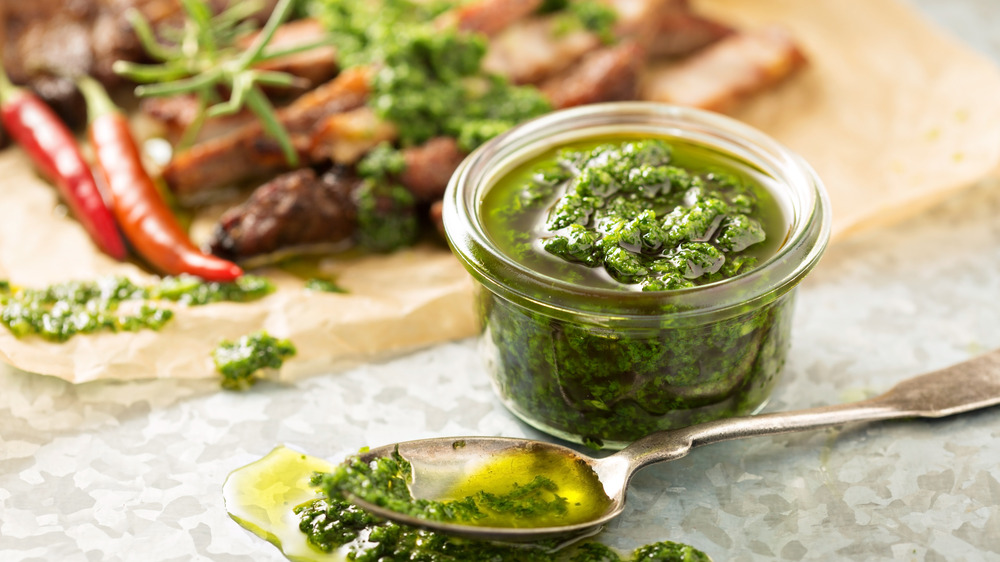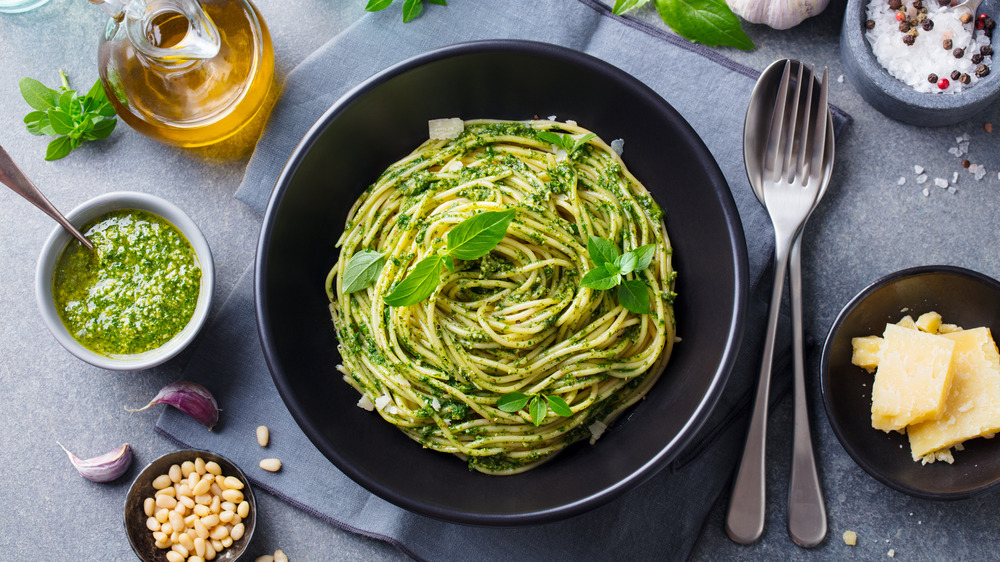Why People Confuse Pesto And Chimichurri
Although they look similar, pesto and chimichurri sauces are actually very different. Both are green, distinctively herbal, and require no cooking, which makes them easy to mix up before you need them and store them in your refrigerator (via Chowhound). However, smelling, seeing, and certainly tasting the two quickly reveals their differences.
Visually, you'll notice that chimichurri is chunkier and has more separated solids and liquids than pesto, which more closely resembles a paste. The sauces are from different continents, and the biggest distinction is the herb used to make each. Pesto's chief ingredient is basil, which has its roots in Liguria — Italy's most prolific basil-growing region, according to Saveur. Chimichurri comes from Argentina, and this sauce owes its green color to parsley (via The Culture Trip).
Classic preparations of both sauces contain garlic (via Olivia's Cuisine and Bon Appétit), as well as oil. Although most contemporary chimichurri recipes call for olive oil, Olivia's Cuisine points out that when chimichurri was developed, Argentines did not have access to olive oil. The most authentic recipes call for sunflower oil. Is it worth buying a bottle of sunflower oil solely for your chimichurri? The purists say yes, because the flavor of olive oil can easily overpower the delicate herbal notes, according to The Rising Spoon, which points out that avocado oil is also acceptable.
Additional flavors and ingredients separate pesto from chimichurri
Aside from their chief herb — parsley for chimichurri; basil for pesto — other differences account for the vastly different flavors of these sauces.
Chimichurri gets some of its delicious complexity from the addition of oregano, something not found in pesto, according to Chowhound. (Some recipes also call for the addition of cilantro; although this herb is not part of the traditional preparation, as cilantro has never been widely available in Argentina, according to The Rising Spoon.) Chimichurri also gets an acidic and tangy boost from vinegar, brightness from lime juice, and heat from chili peppers.
Pesto owes its richness to the cheese and nuts that make up its composition. Recipes from Italy states that this traditionally consists of grated Parmesan or grana padano as well as pecorino sardo and pine nuts.
The sauces also diverge in uses. A bowl of chimichurri is kept on the table any time Argentinians serve asado, or grilled beef (via Authentic Food Quest), whereas pesto is classically tossed with pasta.
A final note about making these sauces: While food processors are a great tool, making chimichurri and pesto by hand will produce the most authentic results. Chimichurri calls for coarsely chopped parsley, and the best way to do this is with a knife, opines Olivia's Cuisine. As for pesto, using a mortar and pestle over a food processor will prevent the oxidation that can turn basil leaves brown. If you're in a hurry, choose a blender over a food processor, as it produces more consistent purée (via Fine Cooking).

